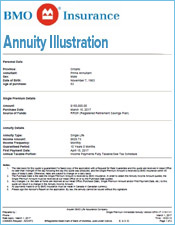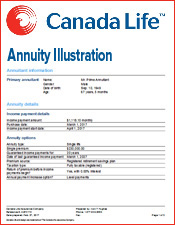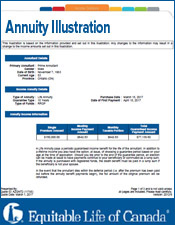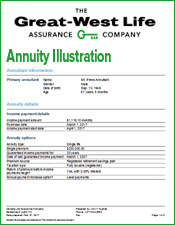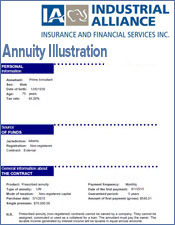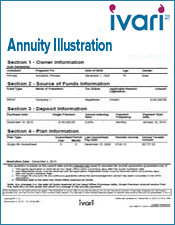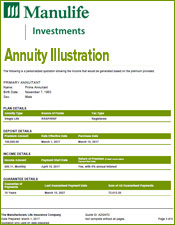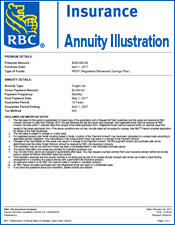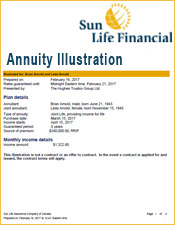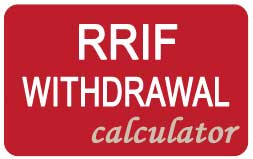What Is A Segregated Fund?

Segregated Funds
A segregated fund is a lesser known investment option for Canadians that offers specific benefits. It is similar to a mutual fund in some ways, but also has significant differences. It also has benefits that a mutual fund does not offer.
What is a Mutual Fund?
In 2020, Canadian investments in segregated funds increased by 10%, according to the financial services company Morningstar. Financial experts attribute this to the capital guarantees that come with a segregated fund after severe drops in the stock markets due to Covid-19.
If you’re considering an alternative investment vehicle which offers more capital security, a segregated fund could be a viable solution. Let’s look at what sets a segregated fund apart from other investment options.
Similarities to a Mutual Fund
A segregated fund is similar to a mutual fund as it is a market-based investment where investors pool money to invest in a variety of underlying securities such as bonds, stocks, and other assets.
The investor does not control or own the assets within the fund. Instead, the company that manages the fund owns the financial assets, but the investor owns an interest in these assets.
Investors can either choose passively or actively managed mutual funds. Passively managed funds follow a market index, while actively managed funds have a manager or management team that makes decisions regarding the underlying securities. A segregated fund is always actively managed by the insurance company that sells it.
In both cases, the goal of these financial vehicles is to make financial gains over time through the right combinations of assets. Investors can choose a fund that meets their risk tolerance and investment goals. Both a mutual and segregated fund can be a good addition to a portfolio as they can minimize investor risk through diversification.
Instead of investors putting all their eggs in one basket, they can choose a mutual fund or segregated fund that offers a mix of stocks, bonds, money market funds, or both stocks and bonds to create a broader investment portfolio. Investors also have a choice of sectors and markets for even further diversification.
Each mutual fund and segregated fund has a distinct group of assets as well as varying returns, fees, risk levels, and stipulations.
Differences from a Mutual Fund
Even though a mutual fund and a segregated fund have similarities, they are also dissimilar in many ways. A segregated fund is a life insurance contract with two parts – an investment with growth potential like a mutual fund and an insurance policy that addresses risk.
A mutual fund can be bought directly from a company or brokerage or through a financial institution. Conversely, a segregated fund is sold by insurance companies through licensed insurance representatives or insurance brokerages.
Governed Under Different Authorities
The segregated fund isn’t something new. It is just not as well-known as a mutual fund as it is not sold in financial institutions. Many investors are only exposed to a segregated fund when their financial advisor suggests it as an option.
Even though it is not as widely recognized as other financial options, it has played an important role in in Canada for over 30 years.
Since a segregated fund has an insurance component, the same regulatory bodies that oversee the insurance industry govern them. The Office of the Superintendent of Financial Institutions (OSFI) ensures Canada’s insurance companies have sufficient capital. A segregated fund contract is subject to the OSFI guidelines regarding guarantee provisions.
The Insurance Companies Act in Canada is the primary legislation that outlines responsibilities and protections. Each province also has specific laws regarding segregated funds within their jurisdiction.
The Insurance Bureau of Canada also governs the code of consumer rights and the Consumer Affairs Department of the Government of Canada manages insurance industry complaints.
Conversely, mutual funds are like investments in the stock market. They are not guaranteed or protected by the Canada Deposit Insurance Corporation (CDIC).
Mutual funds are regulated through the Mutual Fund Dealers Association of Canada (MFDA) and complaints regarding dealers go through the non-profit, self-regulated Investment Industry Regulatory Organization of Canada (IIROC).
Traded Differently
A segregated fund is structured as a deferred variable annuity contract bought directly from an insurance company or a licensed insurance representative, but it isn’t traded in the public market.
On the other hand, mutual funds are directly linked to market performance. Investors redeem shares directly with the fund, or through an authorized broker and the fund covers shareholder redemptions.
Varied Protection from Investment Losses
Another major difference between a mutual fund and a segregated fund is that a segregated fund offers some protection against losses. Mutual funds do not offer protection. Consequently, investors could potentially lose some or all of their investment.
However, investors shouldn’t think they can invest in a segregated fund and then pull out their initial investment without a cost. That is not how it works. Guarantees on investment losses are paid at maturity or death.
Death benefits afforded in a segregated fund are not subject to medical examinations or any other health-related conditions. However, contract conditions or exclusions may eliminate or reduce payouts to the beneficiary, such as the contract holder’s age.
Generally, a segregated fund guarantees between 75 and 100 percent of premiums paid, less expenses such as management fees. Even if the underlying securities perform poorly, investors are still guaranteed part or all of their investment through the insurance portion of the investment.
Segregated funds offer three formats. The first guarantees 75% of capital at maturity and at death (75/75). The next format guarantees 75% of capital at maturity and 100% at death (75/100). This is the most popular option. The last format guarantees 100% of capital at maturity and death (100/100).
The various percentages offered can be matched to investment needs. For instance, a 75/75 segregated fund could offer growth and flexibility. A 75/100 segregated fund might be more suitable for an investor interested in growth and estate preservation. A 100/100 segregated fund could offer growth and total principal protection.
Some funds also offer “riders” on guarantees that provide investors with higher death and maturity benefits and automatic resets for an additional fee.
Each segregated fund also includes investment minimums, various investment lengths, age limitations and triggers, and restrictions on whether it can be included in a registered account or not, plus other stipulations.
Resets
A reset is an option that is usually only available to a 100/100 segregated funds. It occurs annually on the anniversary of the contract. If the value of the contract has increased, the investor can increase their capital guarantee to match the gains.
As an example, a $50,000 segregated fund could increase by $12,000. In this case, the investor could reset their protection to $61,000. If the value of the contract drops, the initial 100% guarantee still holds.
However, a reset also alters the length of time the investor must hold the fund. Typically, this is 10 years from the reset. Additionally, some companies charge a fee for a reset.
Different Estate Implications
A segregated fund is a long-term investment (usually 10 to 15 years) and best held until contract maturity as it offers life insurance benefits. Typically, beneficiaries receive which is ever greater - the guaranteed death benefit or the market value of the owners share.
If the contract has been reset, beneficiaries are paid the difference between the market value of the owners share and the reset value. Beneficiaries usually receive their payout fairly quickly as a segregated fund is handled like an insurance policy.
Mutual funds are also intended as long-term investments. However, at death a mutual fund can become part of the estate and it is taxed at the share price on the date of death. Funds will not be released until probate is settled.
Credit Protection Variance
A segregated fund also offers creditor protection when the contract holder names a family member as a beneficiary. Money in a segregated fund can’t be seized or frozen as it is considered an insurance product.
As a result, if the investor files for bankruptcy, the beneficiary receives the funds instead of being absorbed into total assets. This could potentially protect small business owners and entrepreneurs from professional liability.
A mutual fund does not offer credit protection unless it is held in an exempt account such as an RRSP.
Fees
The fees associated with each segregated fund type vary between segregated fund type and insurance company. Investors can expect to pay higher fees than a mutual fund, due to the guarantees offered. Total fees may include management fees, insurance fees, operating costs and applicable sales tax. However, a segregated fund invested in high return equities can offset higher fees, plus add diversity to a portfolio.
As with all investment products, it pays to shop around. Some 75/75 Canadian balanced fund fees rival those of Canadian balanced mutual funds. Others charge significantly higher amounts. Nonetheless, evaluating a segregated fund should include a thorough understanding of all advantages and disadvantages mentioned later in this article.
One of the biggest controversies about paying potentially higher fees for the guarantees offered by insurance companies is future uncertainty. No one can predict how the markets will move throughout the investment period and if the segregated fund doesn’t make gains, fees will eat away at returns. However, resets on a 100/100 segregated fund could eliminate this problem.
Historically, the markets have outperformed most segregated funds. However, due to the pandemic the market is very volatile at the moment. Prolonged negative losses could be a strong reason to consider a segregated fund due to its capital guarantees.
Nonetheless, many financial advisors suggest investors allocate no more than 20% of their portfolio to a growth-oriented segregated fund. Others suggest alternative financial products to investors that are fearful of the markets which offer lower fees and guarantees such as protected notes, private debt, and other investment vehicles.
Investors interested in capital protection should definitely seek financial advice to explore their options. A segregated fund isn’t the only product available and should only be used when it suits investment goals and risk tolerance level.
Cash Withdrawals
Mutual funds can be cashed out at any time. However, the deposit maturity guarantee of a segregated fund is subject to a reduction if the contract holder makes cash withdrawals during their contract.
A segregated fund is meant to be a long-term investment and investors hope that their investment will grow and the contract will mature with a higher value. However, unless the investor wants to negate their guarantees, a segregated fund is not suitable for cash withdrawals. Withdrawals can also trigger fees.
How Does a Segregated Fund Work?
A segregated fund gets its name from its unique position within an insurance company’s investments. It is not included in the money an insurance company uses to operate their business, hence the term “segregated fund”.
Each investor buys a contract, called an Individual Variable Insurance Contract (IVIC), otherwise known as a segregated fund contract. Premiums paid go towards the segregated fund(s) of their choice as deposits. The deposits are allocated to the selected funds through the assistance of a life insurance licensed representative.
A segregated fund is deemed to be a trust for tax purposes. It allocates all income and losses among contract owners that held units during the calendar year. The allocation is proportional to the number of notional fund units held by every policyholder on December 31st. The tax levied depends on the investment type. Income is reported on a T3 for non-registered accounts.
Since a segregated fund is an investment vehicle and an insurance product, it uses terms from both realms. Think of a segregated fund as an investment in an insurance contract that appreciates over time.
The contract or policy owner is the person that enters into the contract and owns the segregated fund contract.
Each contract is based on the life of a person, called an annuitant. The annuitant is the person covered under the contract for the maturity guarantee and death guarantee. However, these terms vary in Quebec. It is important that investors understand the legalities that apply to their province or territory.
Contract holders participate in the potential growth of financial markets while simultaneously enjoying contract guarantees such as payments to the contract holder or their beneficiaries. Typically, a segregated fund contract provides these payments on a specified date in the future (annuity).
Investors choose beforehand whether they want to receive a one-time single payment or a series of payments.
Specialty Segregated Funds
Some insurance companies offer a form of a segregated fund called a guaranteed monthly minimum benefit fund (GMWB). It guarantees the investor an income stream through annual withdrawals of their premiums paid into their contract, typically 5% to 7% of the amount invested. This income is paid, regardless of the investment's performance.
These funds tend to be expensive and are usually suitable for investors near retirement that do not want to jeopardize their portfolio. Market-linked GICs are the only other product that is slightly similar to a GMWB. However, these earn interest revenue which is subject to a higher tax rate. Plus, GICs don’t offer resets.
Other exclusive funds also exist, such as the direct real estate fund, Real Estate (GWLRA) fund. However, both GMWB and exclusive funds are slowly vanishing from the marketplace.
Advantages of a Segregated Fund
All financial products offer advantages and disadvantages and none are without risk. Investors should always consider how the product suits their investment objectives and seek financial advice if they are unsure.
Here are the most notable advantages of a segregated fund:
- Between 75 and 100 percent of principal investment protected, if held until maturity
- Guaranteed 75 to 100 percent of principal investment tax-free as death benefit to beneficiary, regardless of the health of the annuitant or the policyholder
- Funds paid directly to beneficiary, without dealing with probate
- Funds cannot be seized or frozen
- Potential to “reset” some contracts to increase guarantees if market value increases significantly
- Option to include some contracts in RRSP, TFSA, and RRIFs
- Large selection of funds including money market, balanced, fixed income and equity
- Professionally managed
- Typically focus on high-quality equities
- Low entry cost - as little as $50 per month through some companies
- Regulated by insurance bodies and governed by consumer practices in all provinces and territories
- Can cash in full or partially at any time, but partial withdrawals affect guarantee values
Disadvantages of a Segregated Fund
Even though a segregated fund has many advantages, it also has significant disadvantages. Investors unsure of which products best suit their needs should seek the advice of a financial advisor.
Here are the most notable disadvantages of a segregated fund:
- Funds essentially locked-in over a long period
- Guarantees dependent on holding contract until maturity
- Withdrawals paid out at current market value minus fees which could amount to less than initial investment
- Usually higher Management Expense Ratio (MER) than mutual funds
- Potential front-end loads (initial sales charges) or back-end loads (deferred sales charges) for transactions
- Potential fees for riders (optional benefits)
- Potential early withdrawal penalties
- Potential to forfeit principal guarantee or guaranteed death benefit for early withdrawals
- More restrictive investment choices and potentially lower returns
Finding a Segregated Fund Administrator
Commonly, a segregated fund is administered by a life insurance company. Canada Life, Manulife and Sun Life are well-known, but thirteen insurers offer at least eighteen segregated funds in Canada.
Unlike mutual funds, it isn’t easy to find information on segregated funds lumped into one handy chart. You’ll need to pay for a subscription for a service such as Morningstar or InsuranceINTEL or use an advisor who already has access. Using a licensed advisor offers benefits as they often represent many companies and aren’t promoting a single entity. Advisors also provide a written disclosure of which companies they represent.
The Segregated Fund Comparison Chart generated by InsuranceINTEL demonstrates the complexity of segregated fund offerings. With so many options, using an advisor is a wise decision.
Selecting a Segregated Fund
Each fund is obligated to report their performance such as annual returns and fees. However, past performance is not necessarily a guarantee of future performance. Plus, there are other aspects on investing in a segregated fund that investors should explore.
As an example, investors may want to add a segregated fund to a retirement account such as a Registered Retirement Savings Plan (RRSP), Tax-Free Savings Account (TFSA), or Registered Retirement Investment Fund (RRIF). They may also want to focus of particular markets or sectors that align with their investment goals. Socially responsible investing is a good example.
Additionally, a segregated fund contract is often a very complex document. Some investors may not understand all terms, conditions, and fees.
Finally, not all segregated funds perform well. Only 6% of the 104 segregated funds in Canada received the 2020 FundGrade A+ rating which measures risk-adjusted returns and high consistency through an entire calendar year. Considering the fees involved in a segregated funds, investing in high-return equities is crucial to offset them.
If all this seems overwhelming, it needn’t be. Life Annuities has been working with Canadians since 1999. We connect investors to investment products and do not work for particular insurance companies or banks.
Our brokers offer expert advice and access to a broad range of wealth management services and investment options, including segregated funds, mutual funds, annuities, ETFs, and more. With so many options available, it is important to eliminate investment confusion to find the right asset allocation for your risk tolerance level.
Let us help you reach your investment goals quicker than you could have imagined. Contact us for a free consultation with a qualified broker.
What to do now?
- We supply you with the best segregated funds and other eligible investments in Canada as our brokers represent all the best financial institutions in Canada. For personal assistance on your segregated funds please use our Segregated Fund Form.




